Review for The Tower of Druaga: The Complete Series (6 discs)
Introduction
Now this is a very special series indeed, although not in terms of its content. Watchable though it may be, The Tower of Druaga holds a much more important place in the history of anime, it is a watershed series, unlikely though that may seem. It's amazing how quickly the new way of doing things has settled in, you practically expect every new run anime in Japan to get simultaneous US streaming as well, and with any luck a global stream too. Minnows that we are in the anime industry, even we in the UK can expect to see half the new run anime shows each season, streamed directly to our computers via a range of online video streaming services. Yet barely 2 years ago, this particular option just wasn't there for anime fans. Unless you were in Japan, you had no alternative other than illegal fansubs if you wanted to watch new release anime. The TV market had almost dried up, and even then, most televised anime in the West were the older shows, already licensed, dubbed, and released on DVD in their respective markets.
Then something incredible happened. Up to that point, the streaming service and fan community Crunchyroll was the fansub equivalent of Mos Eisley. They suddenly got an influx of venture capital, decided to go respectable, and deleted all the illicit content on their site, and ventured into the legitimate anime industry looking for licences. The first two shows that they got, the first shows to be streamed to the world freely and legally and supported by advertising, were two Gonzo shows, Blassreiter, and this, The Tower of Druaga. These two rather innocuous and unremarkable anime opened the floodgates to a whole new industry, and anime has never been the same.
The DVDs have taken a while to get to the UK though, Druaga has been out in the US for over a year now, and Siren Entertainment released it in Australia last summer. We've even had other releases in the interim in the UK that have debuted online more recently, shows like Slayers Revolution, Sengoku Basara, and Fullmetal Alchemist Brotherhood. If you take a look at Manga Entertainment's summer schedule, over half of their output came to the Internet first, so this Tower of Druaga release is almost nostalgic in comparison. In the US, Funimation originally released the Tower of Druaga in two 2-disc collections. Siren in Australia wanted to beat them to the punch, so they initially released the show without a dub. A few months later, they offered the show in the usual hybrid format, but they then switched to three discs per set, which is why MVM, having sourced the PAL masters for the UK, are releasing the complete Tower of Druaga on six discs instead of the US four disc release.
The Tower of Druaga was initially released as two series, The Aegis of Uruk and The Sword of Uruk, and with Siren feeling their way into the market, there are some differences between the two on this release.
The Tower of Druaga: The Aegis of Uruk
The Summer of Anu has arrived, that rare time when the monsters and beasts inhabiting the Tower of Druaga are weakened, and it becomes a tad easier for adventurers and treasure-seekers to venture upwards in search of fortune and glory. For one would be climber, Jil, his ambition is to reach all the way to the top, and to claim the holy Blue Crystal Rod for himself, after defeating the evil god Druaga. He's part of an elite band of adventurers too, in brother Neeba's band, alongside the sorceress Fatina, the warrior Utu, and the scout Kally. The problem is that Jil is an incompetent klutz, and it isn't long before he finds himself unemployed. As the summer of Anu begins in earnest, and hordes of climbers assault the legendary Tower, Jil needs a new skilled band to sign on with. What he gets are the leftovers, mostly. The most skilled among them is the warrior Ahmey, although she's less than impressed with her teammates, none of whom have any experience climbing the tower. A good mage would help, but Melt isn't a good mage. He's an arrogant aristocrat fallen on hard times, who is nowhere near as amazing as he thinks he is, and whose only apparent contribution is his acerbic servant Coopa, who for such a diminutive girl, has the strength of a pack mule. And then there is the enigmatic Kaaya, who is even more determined to reach the top than Jil. She's a skilled healer for sure, but she's not all that forthcoming about herself. But this is no ordinary summer of adventuring. There's strange conspiracies afoot in the nation, and the aged King Gilgamesh has his own secrets about the Tower that hark back to when he was a young adventurer 80 years previously. 12 episodes are presented across 3 discs.
Disc 1
1. The Great Tower of Druaga
2. Meskia, The City in the Tower
3. Before Departure
4. Band of the Hand
Disc 2
5. Ziusudra's Trap
6. Bridge of Lightning
7. Dance with the One-Winged Dragon
8. Tower of Legend
Disc 3
9. Eleven Nines
10. Summer's End
11. One Solitary Shield
12. You Zapped To…
The Tower of Druaga: The Sword of Uruk
Six months have passed since Neeba and Kaaya's betrayals in the Tower, six months since Jil and the other climbers defeated Druaga. Since then, despite apparent prosperity for the people of Uruk, there has been a bizarre shift, with King Gilgamesh and his aides becoming ever more corrupt. The king took the credit for the downfall of Druaga, renaming the tower in his own honour, and the brave climbers were ignored and then forgotten. Commander Kelb of the king's guard resigned in disgust, and now runs a tavern in Meskia. It's where Jil spends his days and nights, drowning his sorrows in tomato juice. He and Fatina tried to ascend the Tower once again, in their pursuit of Neeba and Kaaya, but the Mythical Tower that appeared at the summit had long since vanished. Jil is at a loss when it comes to what to do next, until the night that Fatina tries to cheer him up by taking him out on the town. It's there that they bump into a little girl named Ki, running from the Golden Knights. By protecting her, Jil and Fatina find that they are now fugitives from the king. More curious though is that Ki claims to be High Priestess of Ishtar Ki, the wife of the king, Queen Ki. She presents Jil with a terrifying vision of the future that will come to pass, unless they escort her to the Mythical Tower, which she has the power to summon. Gathering a band of adventurers, new faces and old, it's time for Jil to once again ascend the Tower of Druaga. 12 episodes are presented across 3 discs for the second half of the series.
Disc 1
1. The Tower of Gilgamesh
2. Capital City Meskia
3. City of Dreams - Meltland
4. Into the Phantasm
Disc 2
5. The Land of Shadows
6. The Four Assassins
7. House of Eternal Spring
8. The Two of Them were Once
Disc 3
9. The End of the Dream
10. Last Resort
11. Slayer of God
12. Hand in Hand
Picture
The Tower of Druaga gets a 1.78:1 anamorphic transfer, which sourced from Siren Entertainment in Region 4 land, turns out to be a very agreeable native PAL transfer. It's clear, sharp and colourful throughout, bringing the animation across with none of the issues of a standards conversion, no ghosting, no blended frames, and no reduced resolution. It's great to watch anime this way. No doubt somewhere an audiophile will be griping at the effect the 4% speedup has on the sound, but I know which I'd rather have.
It's the usual Gonzo loveliness when it comes to the animation, their somewhat recognisable character designs, individual and memorable enough for the anime, coupled with some very glorious RPG themed backgrounds and settings. The Tower of Druaga is a very pretty animation. It's imaginative too, paying homage to the 80s RPG computer game that inspired it, often lapsing into 8-bit graphics when the comedy demands. The only fly in the ointment is Gonzo's questionable choice to integrate 3D CGI into the anime, usually fine when you're watching a sci-fi extravaganza, but less so when you're watching a period RPG. In fact there's no attempt to make the two styles of animation blend together, and the advent of Druaga at the midpoint of the series is perhaps the biggest visual letdown in the show.
Sound
You get a choice between DD 5.1 English and DD 2.0 Japanese. I just sampled the English dub, and found it to be unremarkable, if inoffensive. The Funimation cast does its usual dependable job of filling the shoes of the characters, and I'm sure if you are that way inclined, you'll be happy with the dub, especially as the 5.1 audio gives the show a little more space, spreading the music and the effects around the soundstage. But for me, the original language is the way to go. As good Monica Rial may be, she's no Minori Chihara when it comes to bringing out the insane cuteness of Coopa. It's one of the most singular voice actor performances of recent years and really has to be experienced to its fullest. Both shows get pop theme songs completely at odds with the subject matter, but that somehow work very well with the alternate reality opening animations.
Siren must have goofed slightly with the subtitles, and MVM have inherited those issues with the UK discs. Season 1 only has translated subtitles; there are no signs only captions for use with the English dub. That also means that Season 1's songs have no subtitle translations at all. There's also one line of scrambled subs in episode 6. For Season 2, Siren remedied that and included subs and signs. If you are watching in Japanese and have the subs on, you'll get the songs translated, but they forgot to do this on the signs only stream.
They've included the original language opening and closing credits (understandable when you see the imaginative opening credits sequences), but there's no English translation for the credits anywhere. The show could have done with an extra translated credits reel at the end of each disc.
Extras
The Aegis of Uruk
The discs get animated menus, and a couple of extra features.
On disc 1, you will find the Play Hidden Episode - Multiangle Feature. The first episode is a parody episode that takes place in Jil's imagination, after he's been knocked unconscious by a monster. A special gift for DVD purchasers in Japan was the bonus episode, which revealed what exactly was going on while he was in snoozeland. Here you get the episode in a multiangle format, that allow you to compare it with the actual first episode with a couple of picture in picture options, and having the original episode video with the bonus episode dialogue. Unfortunately on the UK disc, this is only available with the English dub, presented in stereo and lacking any subtitles. Worse, it sounds as if a different dub cast was used, hardly as accomplished as the series proper. It's still a neat episode though.
Disc 2 offers an audio commentary with episode 5, featuring Monica Rial (Coopa), Todd Haberkorn (Jil), and Chuck Huber (Melt). It's another iteration of the Funimation gigglefest that passes for audio commentary, and is entertaining enough, if not exactly edifying. At one point they have a go at reviewers who complain that they spend too much time giggling at the episode and not enough time actually commenting, at which juncture it all got a little too meta for me, and my head exploded.
The Sword of Uruk
The discs once again get the animated menu treatment, although this time they are lighter on the extra features.
A sign that Siren Entertainment were making it up as they go along is the inconsistency between season sets, and not just in the subtitles. For the second season, they offer a Play Uninterrupted Option, which strips out the credits and preview sections for each episode, and plays all the episodes on the disc as one long movie. It turns out that doing so knocks some 15 minutes off each disc's runtime. But as Druaga is one of the shows with really inventive credit sequences, I would be loath to do that.
The only extra feature in the second season is the episode 6 commentary, with ADR director Leah Clark, Jamie Marchi (Fatina), and Trina Nishimura (Kaaya). It's a Funimation gigglefest that I sat through for the sake of the review, really just waiting for it to end. Incidentally, it's hidden away in the episode select menu, briefly giving me the impression that Season 2 lacked extras altogether.
I haven't been able to find out what Siren put out as extras on their Sword of Uruk Set, but it becomes clear that the UK has definitely lost out in terms of extras compared to the US discs. I can't tell if the bonus episode had the Japanese dialogue on the US discs, but I suspect that it did. We also miss out on the clean credits sequences for both series. There's a gag commercial that didn't make it, but by far the biggest omission from the Sword of Uruk collection was a 25-minute featurette on the original Tower of Druaga 8-bit game, and how it was adapted into the anime. I don't know if this was MVM's or Siren's omission, but I would rather have had that than the commentary tracks.
Conclusion
Its place in anime history aside, The Tower of Druaga is a pretty sound RPG adventure satire, a nice blend of action and comedy, not quite as zany as the Slayers franchise, but not too far behind in the entertainment stakes. Unfortunately, it goes the same way far too many Gonzo shows do, winding up a little schizophrenic in tone, before delivering an ending that has my eyes rolling in their sockets, and lamenting once more Gonzo's total inability to properly finish a series. The Tower of Druaga is a whole lot of enjoyable, rousing entertainment, up to the point that it stops being so. The question becomes, how much of it is fun, and is it worth getting on that basis?
If this were just The Aegis of Uruk, the first series, then I would have no hesitation in recommending the show wholeheartedly. The first twelve-episode run gets its mix of comedy and action spot on, with its tongue firmly in cheek when dealing out the usual RPG tropes. It sets its stall out with the first episode, with our hero Jil joining his brother's band to climb the Tower of Druaga. We meet the powerful warrior Utu, the skilled fire-mage Fatina, the wily scout Kally, and of course the determined Neeba. But against these four skilled veterans of the adventuring scene, the newcomer Jil is a cut above, excelling in ways that no one could have imagined, and in the process demolishing every RPG cliché imaginable. The comedy flies thick and fast, and I laughed as much the second time as I did when I first saw the episode streamed. The bit where Fatina gets trapped by over-frisky tentacles, and the men pause just a beat too long before rescuing her is priceless. Of course all of this happens before the big reveal at the end of the episode, which sends us crashing back to reality, but after this, you expect The Tower of Druaga to deliver more comedy than drama.
It does do that in the subsequent episodes of The Aegis of Uruk, with Jil having to find another team to join, and this time having to make do with the second string quartet, rather than the veteran adventurers. Kaaya just wants to get to the top of the tower discreetly, and has her own reasons for doing so. She just grabs the first likely looking candidate that passes and that turns out to be Jil. The only experience member of their team is the former soldier Ahmey, and she spends most of her time exasperated at the incompetence of her allies. The team is later on rounded off with the arrogant aristocratic aspirational mage Melt, and his insanely strong, and insanely cute servant cum caddy (he keeps all his magic wands in a golfing bag) Coopa. It's the kind of band of incompetents that usually succeed through no fault of their own, and rely more on luck than skill. It certainly makes for most of the comedy in these episodes.
The Tower of Druaga is based on an 8-bit adventure game, and there are more than a few nods to that in the show. The episode previews in The Aegis of Uruk are done with 8-bit pixellated characters, and then in the Ziusudra's Trap episode, they wind up facing a minefield of magical devices that transform the world or the characters. One of the transformations turns the whole world into the computer game, which isn't useful following the activation of the gender swap trap near the hot springs. Also in the Tower of Legend episode, they adventurers encounter a mini-tower within the tower, and when Jil steps inside, he loses control of his body. That control passes to Kaaya, who sat outside the tower, has to move Jil up through the maze using something that looks uncannily like an arcade console.
The Aegis of Uruk is inventive, fast paced, deliciously funny, and with a very interesting story. It's fun from beginning to end, and even if the final couple of episodes do lose the humour to get more serious, it's in keeping with the direction of the show.
Given the end of The Aegis of Uruk, you would expect The Sword of Uruk to begin from a darker place, and indeed it does, with betrayal having left Jil and Fatina depressed and impotent back in Meskia, and with strange things happening in the royal court. But the darker tone is countered somewhat with the return of the comedy, particularly when the adventurers encounter the little girl Ki, who is absolutely lethal given a tablespoon and a suitable target in her line of sight. It's time for the band of adventurers to once again ascend the Tower of Druaga, and once again The Sword of Uruk starts off by playing fast and loose with the genre. When they re-encounter Melt and Coopa, the episode cribs strongly from the Lando storyline in The Empire Strikes Back, while structuring the story like an episode of 24, complete with beeping clock. There's also a hint of The Great Escape in there, and you can see that Gonzo are still loading up on the comedy references.
Thereafter however, things really do get more serious, especially when the adventurers leave the Tower of Druaga and enter the Mythical Tower. Once we see the darkness infecting King Gilgamesh and threatening to overwhelm the land, there's more of an ominous edge to the show, and the light-hearted and tongue in cheek tone begins to diminish. By the time the story gets to the House of Eternal Spring Episode, where the travellers encounter the souls of those friends and family who have perished, it really feels like a different show from the start, darker, more tragic, and nowhere near as much fun anymore. Up until episode 11 of The Sword of Uruk, the story at least has some interest to it, as we discover more about the tower, and the truth behind Gilgamesh and his hundred-year rule. It may not put a smile on the face as often as the earlier episodes, but it does at least fill a narrative need.
But then there is that final episode, where it all goes a little too Gonzo for my liking. Be prepared to spend the final 20-odd minutes with a look of complete incredulity on your face, as characters start lobbing nukes around, and the whole purpose of the story turns out to be completely different from everything implied by the previous 23 episodes. It's not an ending that will in anyway satisfy, and it certainly leaves a sour taste in my mouth. And once again, Gonzo save some choice moments for a blink and you'll miss it epilogue, but at least the final image of Ki and her spoon leaves you laughing as the disc comes to a close.
The Aegis of Uruk is comedy gold; the first six episodes of The Sword of Uruk are good, solid entertainment as well. If this were just mathematics, then I would say that 18 out of 24 episodes excelling would be reason enough to buy the show. If only things like storytelling, character development and narrative could be determined as easily as mathematics. In the end, I find that the unfortunate Gonzo conclusion aside, I would simply have to own this series for the unmitigated cuteness that is Coopa, one of the most adorable animated characters ever created.
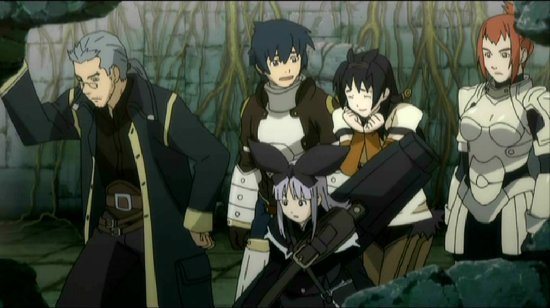
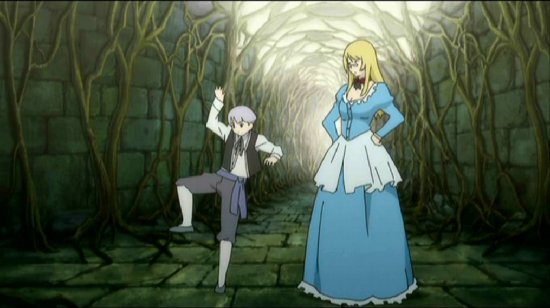
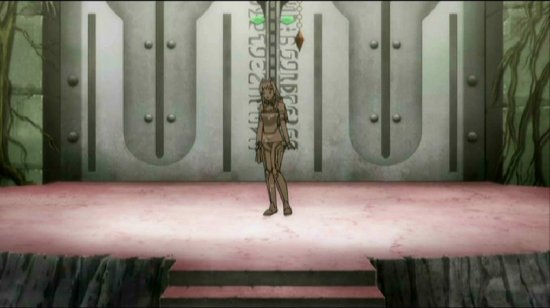

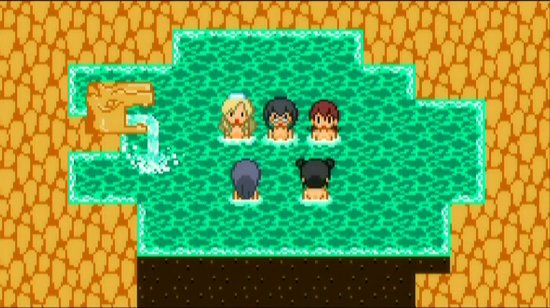
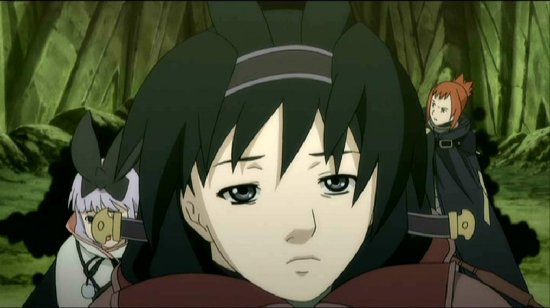
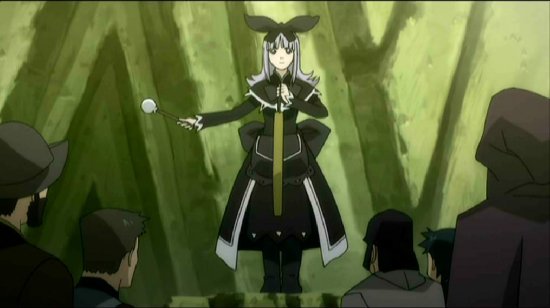
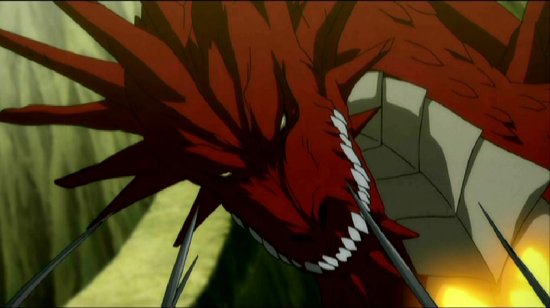
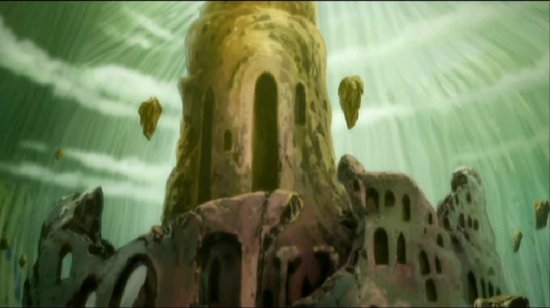
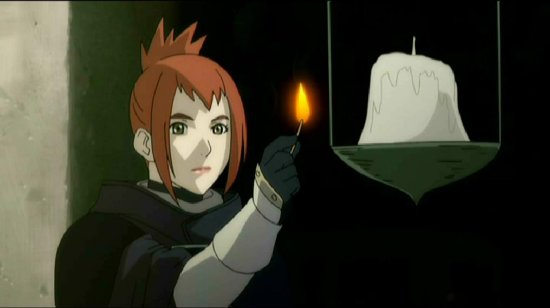

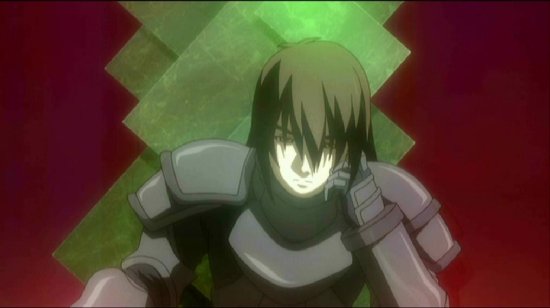
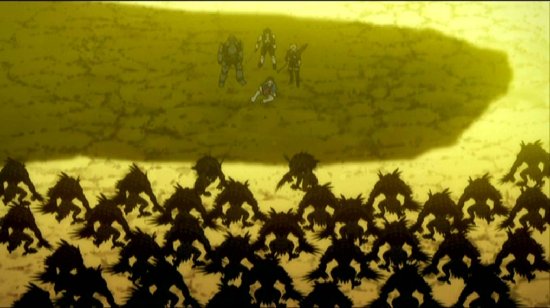

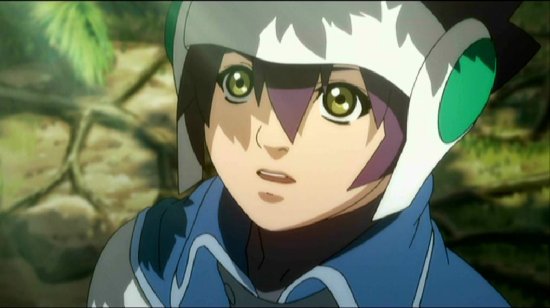
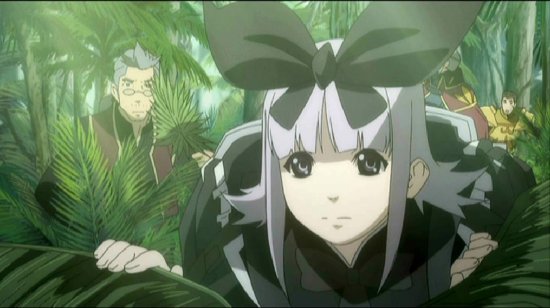
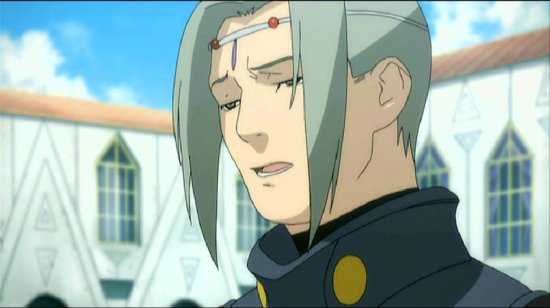
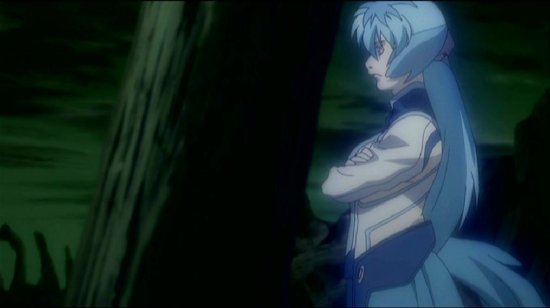
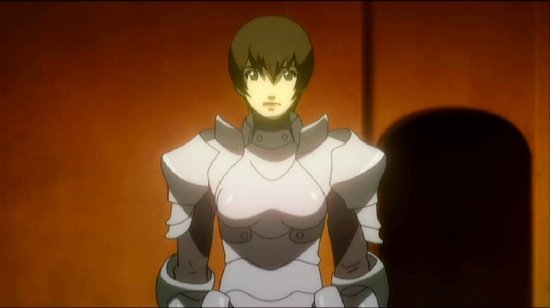
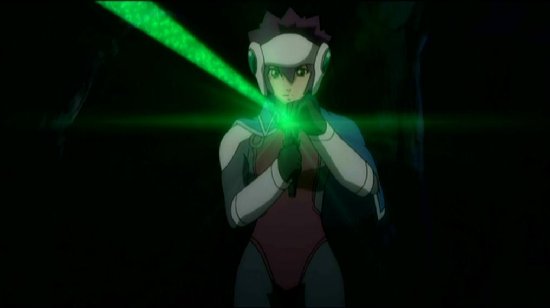
Your Opinions and Comments
Be the first to post a comment!